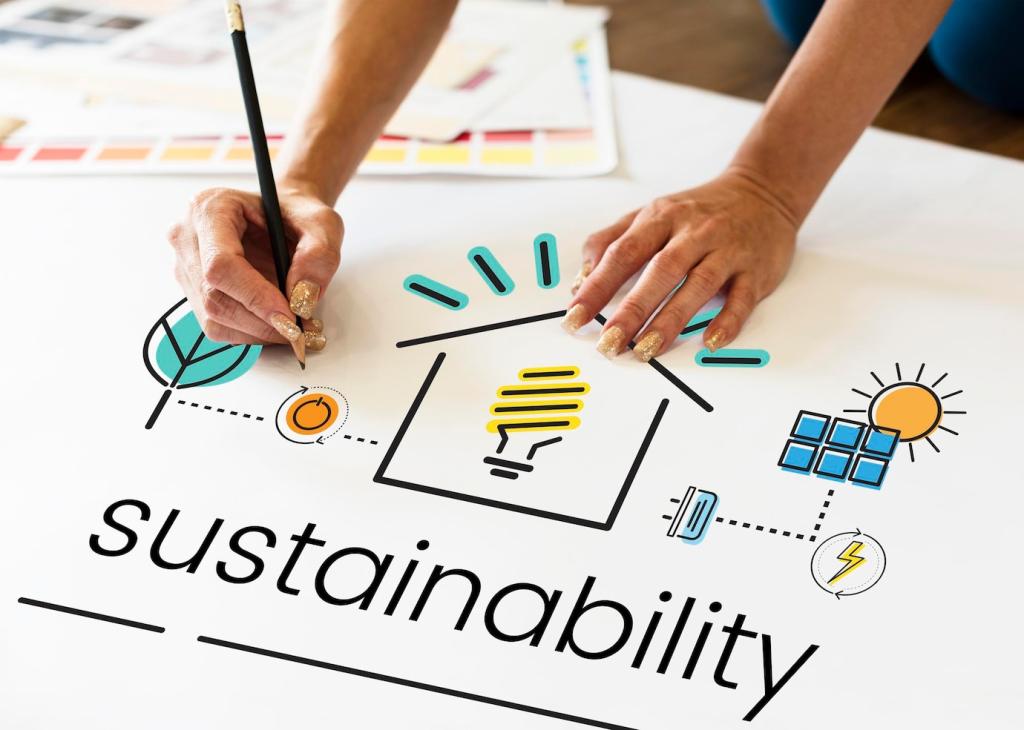Eco-Friendly Insulation Solutions: Comfort That Cares for the Planet
Chosen theme: Eco-Friendly Insulation Solutions. Explore proven, practical ways to keep your home warm in winter, cool in summer, and gentler on the Earth—through smarter materials, thoughtful design, and inspiring real-life stories you can learn from and share.
What Makes Insulation Truly Eco-Friendly
Eco-friendly insulation solutions reduce emissions not only during use but from manufacture to disposal. Prioritize materials with low embodied carbon, recycled or rapidly renewable inputs, and end-of-life pathways like recycling, composting, or clean energy recovery to close the loop responsibly.

Natural and Recycled Materials That Perform
Blown-in cellulose is a hero of eco-friendly insulation solutions. Made mostly from recycled paper and treated with borates for fire and pest resistance, it dense-packs into cavities, filling gaps that waste energy and creating a cozy, quiet envelope around your life.

Design and Installation Strategies for Every Home
For existing homes, eco-friendly insulation solutions often start in the attic and walls with blown-in cellulose or wool. Strategic access holes, dense-pack techniques, and careful air sealing around can lights and chases deliver gains without major demolition or extended downtime.
Healthy Homes: Air, Moisture, and Fire Safety
Low-VOC Ingredients and Additives
Eco-friendly insulation solutions minimize VOCs and unnecessary flame retardants. Cellulose uses borate treatment with low toxicity; natural fibers can meet standards without halogenated chemicals. The result is cleaner indoor air and fewer irritants for sensitive occupants, pets, and growing families.
Vapor-Smart Layers and Drying Paths
Moisture mistakes undermine performance. Pair eco-friendly insulation solutions with vapor-smart membranes and ventilated rain screens. This approach allows assemblies to dry, reduces mold risk, and preserves R-value—especially critical in bathrooms, kitchens, basements, and coastal or cold-weather exposures.
A Quiet Attic, A Calmer Life
A reader replaced patchy fiberglass with dense-pack cellulose and noticed fewer drafts, quieter rooms, and a steadier thermostat. That small attic project embodied eco-friendly insulation solutions: efficient, healthier, and pleasantly calm. Subscribe for more real-world stories and helpful, digestible guides.

Climate-Smart Choices by Region
Cold Climates: Depth, Air Sealing, and Details
Eco-friendly insulation solutions in cold zones emphasize deep attic blankets, meticulous air sealing, and thermal bridge reduction. Dense-pack walls, insulated rim joists, and airtight hatches protect comfort through polar blasts while maintaining vapor openness for safe seasonal drying.
Hot-Humid Regions: Breathable, Dry, and Cool
In steamy climates, eco-friendly insulation solutions focus on vapor-open roof assemblies, well-ventilated attics, and shaded, reflective exteriors. Pair natural insulations with smart membranes to manage inward vapor drives, keeping interiors cool and materials dry despite relentless summer humidity.
Mixed Climates: Versatility and Balance
Where seasons swing, choose adaptable eco-friendly insulation solutions. Combine exterior continuous insulation with vapor-smart layers and targeted air sealing. Plan upgrades in phases—attic first, then walls and floors—to spread costs and learning, and tell us which sequence worked best for you.
Local Supply Chains and Skills
Support nearby mills, cork harvesters, and trained installers who champion eco-friendly insulation solutions. Local sourcing cuts transport emissions and strengthens green jobs. Recommend a trusted supplier in the comments to help neighbors discover reliable options close to home.
Reuse, Recovery, and Material Cycles
Deconstruction and recycling keep resources flowing. Reclaim cork boards, repurpose denim fibers, and responsibly handle old batts. These circular practices complement eco-friendly insulation solutions, reducing landfill burdens and honoring the energy embodied in every carefully produced product.
Join the Conversation and Subscribe
Have a question about cellulose density, wool batts, or exterior cork? Ask below. Share your before-and-after photos, subscribe for field-tested guides, and vote on our next deep dive into eco-friendly insulation solutions tailored to your climate, budget, and renovation timeline.
